
Research Areas
Network Dynamics and Stability

Our supply with electric power relies on the perfectly synchronized motion of thousands of generators and inverters across Europe. We study the self-organization and stability of such highly ordered states in power grids and other networked dynamical systems. Currently, we focus on the control of synchronization and the impact of noise.
Recent publications:
X. Zhang, S. Hallerberg, M. Matthiae, D. Witthaut, M. Timme,
Fluctuation-induced distributed resonances in oscillatory networks,
Science Advances 5 (7), eaav1027 (2019)
D. Manik, M. Timme, D. Witthaut,
Cycle flows and multistability in oscillatory networks,
Chaos 27 (8), 083123 (2017)
K. Sharafutdinov, L. Rydin Gorjão, M. Matthiae, T. Faulwasser, and D. Witthaut,
Rotor-angle versus voltage instability in the third-order model for synchronous generators,
Chaos 28, 033117 (2018)
M. Rohden, A. Sorge, M. Timme, and D. Witthaut,
Self-Organized Synchronization in Decentralized Power Grids,
Phys. Rev. Lett. 109, 064101 (2012)
Network Robustness
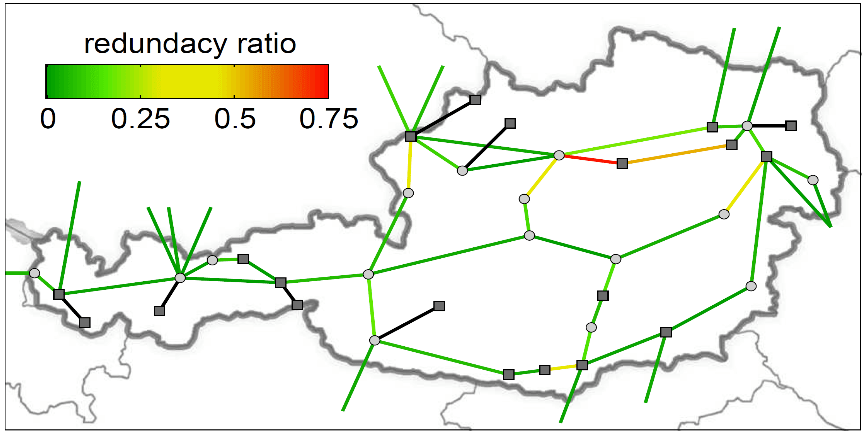
We investigate the robustness of networks to structural damages. Which links are indispensable for network operation? How do cascades of failures spread through a grid? And how can we optimize the structure of a network to improve its robustness? We work on fundamental aspects as well as applications to power grids and biological supply networks.
Recent publications:
B. Schaefer, D. Witthaut, M. Timme, and V. Latora,
Dynamically induced cascading failures in supply networks,
Nature Communications 9, 1975 (2018)
D. Witthaut, M. Rohden, X. Zhang, S. Hallerberg, and M. Timme,
Critical Links and Nonlocal Rerouting in Complex Supply Networks,
Phys. Rev. Lett. 116, 138701 (2016)
H. Ronellenfitsch, D. Manik, J. Hoersch, T. Brown, and D. Witthaut,
Dual theory of transmission line outages,
IEEE Trans. Power Syst. 32, 4060 (2017)
Data Science for Energy System Operation
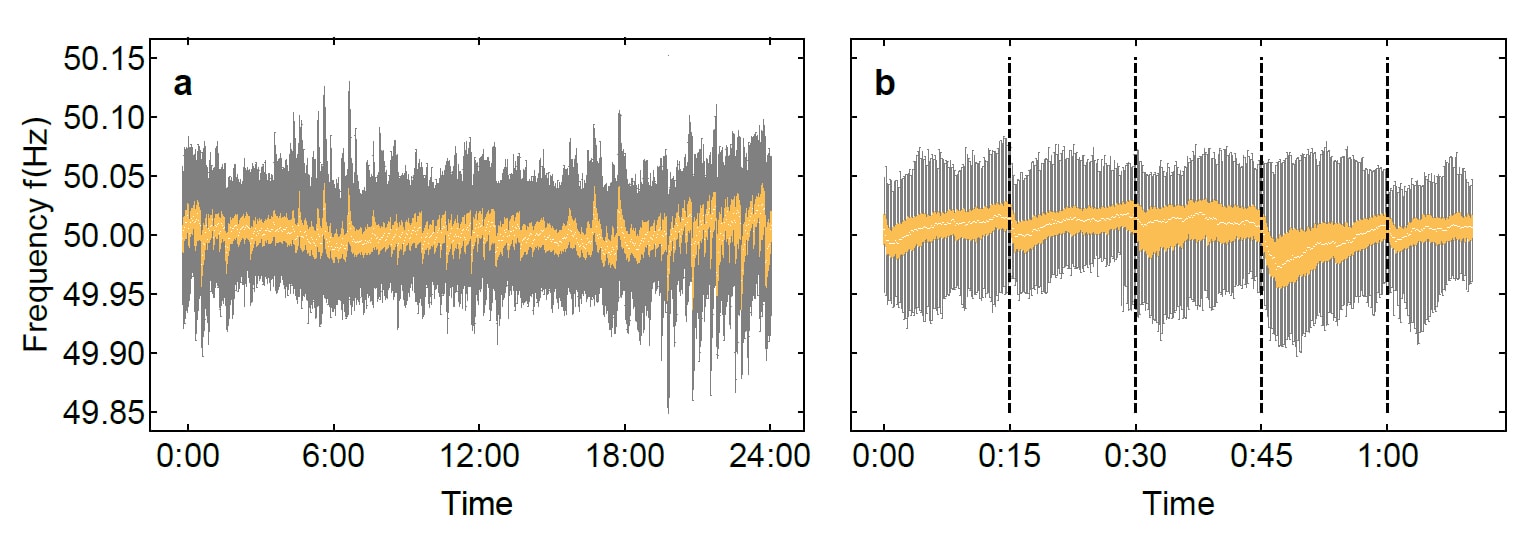
A stable supply with electric power is essential for our economy and daily life. Grid operators collect huge amounts of data each second to supervise and control the system, and to detect and mitigate disturbances. We apply methods from statistical physics, time series analysis and machine learning to analyze energy system data. We focus on the power grid frequency, which is readily measured and bears essential information about the state of the entire power system.
Recent publications:
B. Schaefer, C. Beck, K. Aihara, D. Witthaut, and M. Timme,
Non-Gaussian power grid frequency fluctuations characterized by Lévy-stable laws and superstatistics,
Nature Energy 3, 119 (2018)
J. Kruse, B. Schäfer, D. Witthaut,
Revealing drivers and risks for power grid frequency stability with explainable AI,
Patterns (2021)
L. Rydin Gorjão, M. Anvari, H. Kantz, C. Beck, D. Witthaut, M. Timme, B. Schäfer,
Data-Driven Model of the Power-Grid Frequency Dynamics ,
IEEE Access 8, 43082 (2020)
L. Rydin Gorjão, R. Jumar, H. Maass, V. Hagenmeyer, G.C. Yalcin, J. Kruse, M. Timme, C. Beck, D. Witthaut, B. Schäfer,
Open data base analysis of scaling and spatio-temporal properties of power grid frequencies ,
Nature Communications 11, 6362 (2020)
Climate and Energy System Analysis
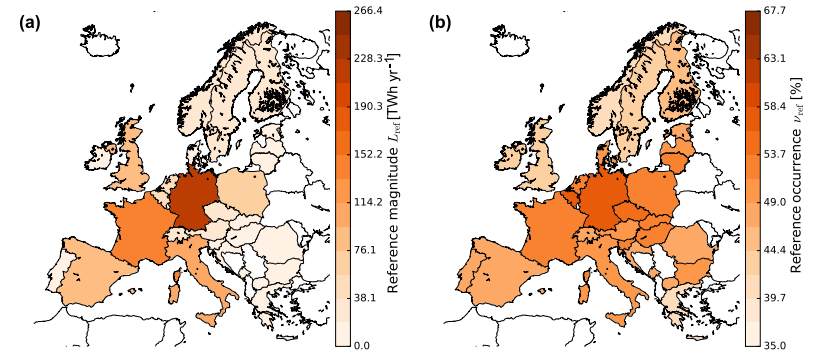
Our future energy system will be based on variable renewable energy sources such as wind and solar photovoltaics. To enable a stable supply, we must understand this variability across time scales and its impact on energy system operation. We combine methods from time series analysis, statistics and climate science to quantify this variability and identify challenges for system operation. Furthermore, we analyze technologies promoting flexibility in energy and power system.
Recent publications:
S. Morgenthaler, W. Kuckshinrichs, D. Witthaut,
Optimal system layout and locations for fully renewable high temperature co-electrolysis,
Applied Energy 260, 114218 (2020)
J. Wohland, N.E. Omrani, N. Keenlyside, D. Witthaut,
Optimal system layout and locations for fully renewable high temperature co-electrolysis,
Wind Energy Science 4 (3), 515-526 (2019)
J. Wohland, M. Reyers, J. Weber, and D. Witthaut,
More Homogeneous Wind Conditions Under Strong Climate Change Decrease the Potential for Inter-State Balancing of Electricity in Europe,
Earth System Dynamics 8, 1047-1060 (2017)
J. Weber, J. Wohland, M. Reyers, J. Moemken, C. Hoppe, J. G. Pinto and D. Witthaut,
Impact of climate change on backup and storage needs in highly renewable power systems in Europe,
PLoS ONE 13, e0201457 (2018)
Econophysics
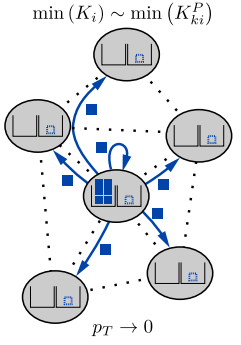
We study complex optimization problems in economic networks and large integrated decision models. How do economic networks emerge from individual decisions? How do conflicting targets and constraints determine the behavior of complex models? We study these fundamental economic questions from the viewpoint of complex system and network science.
Recent publications:
Malte Schröder, Jan Nagler, Marc Timme, and Dirk Witthaut,
Hysteretic percolation from locally optimal individual decisions,
Phys. Rev. Lett. 120, 248302 (2018)
Chengyuan Han, Dirk Witthaut, Marc Timme, and Malte Schröder,
The winner takes it all ─ Competitiveness of single nodes in globalized supply networks,
Plos One 14, e0225346 (2019)
Chengyuan Han, Johannes Többen, Wilhelm Kuckshinrichs, Malte Schröder, and Dirk Witthaut,
Reconstruction of Demand Shocks in Input-Output Networks,
preprint at ArXiv
Quantum Mean-Field System
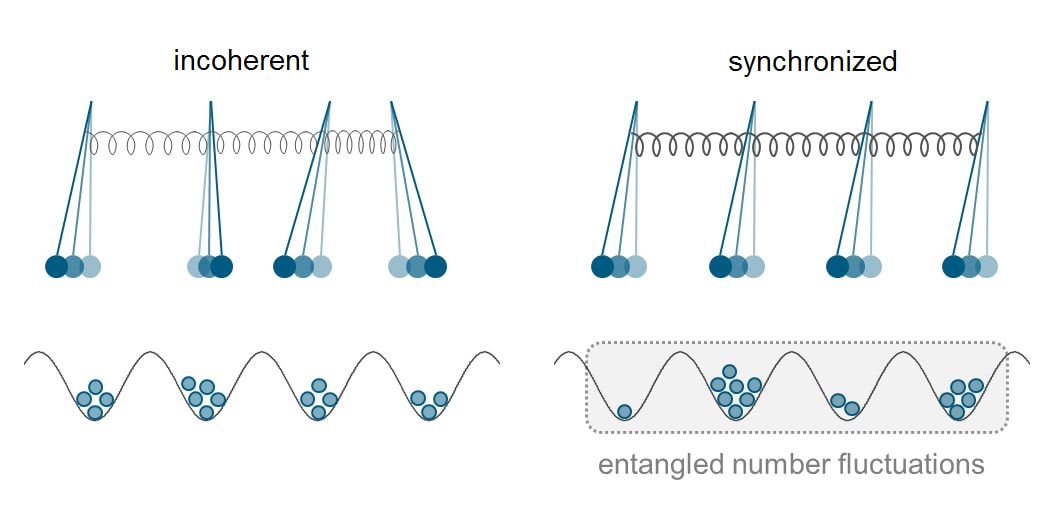
We study the dynamics of quantum many--body systems at the interface of quantum and ‘classical’ mean-field dynamics. We investigate the dynamics of nonlinear mean-field models, the manifestation of classic collective phenomena or instabilities in the quantum world and fundamental aspects of the mean-field limit.
Recent publications:
D. Witthaut, S. Wimberger, R. Burioni, and M. Timme,
Classical synchronization indicates persistent entanglement in isolated quantum systems,
Nature Communications 8, 14829 (2017)
J. H. Müller, D. Witthaut, J. J. Arlt, E. S. Polzik, and A. J. Hilliard,
Semi-classical dynamics of superradiant Rayleigh scattering in a Bose-Einstein condensate,
J. Mod. Optics 63, 1886 (2016)

